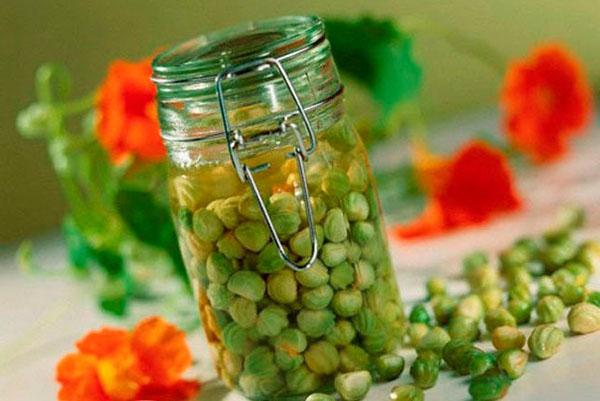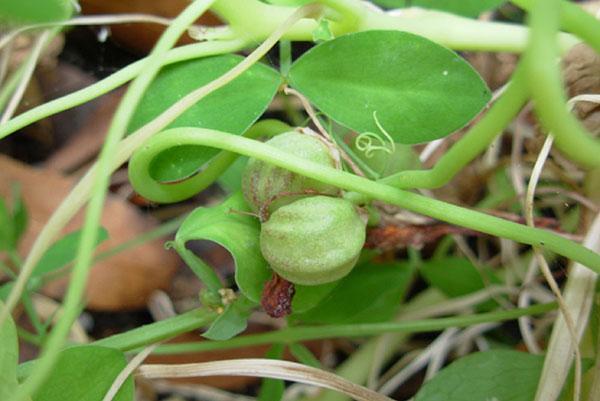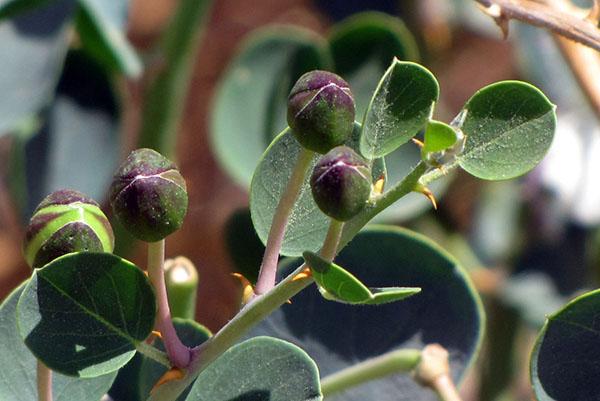Recipes for making capers from nasturtium seeds
 On the culinary pages of sites, we increasingly began to come across recipes for capers from nasturtium seeds. Someone will leaf through this curiosity, and those who are interested and tried to make capers will return to them annually. Real capers are quite expensive, but you can save money by making them yourself at home from nasturtium.
On the culinary pages of sites, we increasingly began to come across recipes for capers from nasturtium seeds. Someone will leaf through this curiosity, and those who are interested and tried to make capers will return to them annually. Real capers are quite expensive, but you can save money by making them yourself at home from nasturtium.

A little about nasturtium
Nasturtium is not only beautiful in appearance, but also useful. It contains vitamins A, B1, B2, C, iodine, potassium, phosphorus and essential oil. Tinctures and decoctions based on it have long been used in folk medicine to treat flu and strengthen immunity.
 She also became famous in cooking as an additive. To bring an unusual dish to life, you can take buds, seeds, unripe fruits, even leaves. They are prepared in two ways: pickled or salted. Nasturtium marinated is a spicy seasoning for other dishes. The seeds are pickled in various types of vinegar or simply salted. As a result, their unusual taste fits perfectly into soups, sauces, salads and sandwiches. A nasturtium seed box is good for capers, so below are some recipes for making them from nasturtium seeds.
She also became famous in cooking as an additive. To bring an unusual dish to life, you can take buds, seeds, unripe fruits, even leaves. They are prepared in two ways: pickled or salted. Nasturtium marinated is a spicy seasoning for other dishes. The seeds are pickled in various types of vinegar or simply salted. As a result, their unusual taste fits perfectly into soups, sauces, salads and sandwiches. A nasturtium seed box is good for capers, so below are some recipes for making them from nasturtium seeds.
Recipe 1 - long salted nasturtium seeds
Preparation:
- Place the dried 100 grams of seeds in a jar.

- Make a pickle marinade. To do this, take 15 grams of salt, pour in 200 grams of wine vinegar, add 5 pieces of black pepper here. Boil the mixture.

- Pour the marinade over the nasturtium and roll up the lid. The provisions will be ready in three months. The nasturtium caper is ready.

To enhance the taste, you can add a bay leaf, a branch of thyme, cloves of garlic, and celery seeds to the workpiece.
Recipe 2 - quick pickling nasturtium seeds
Preparation:
- Make a salty brine (add 2 tablespoons of salt to about 1 liter of water) to saturate the seeds with it. Fill a jar with seeds placed there with chilled brine for a day.

- Drain the liquid the next day and leave to dry completely.
- Prepare the marinade (4 tablespoons of white wine vinegar to 2 teaspoons of sugar). Add 2 bay leaves and a thyme branch for aroma. Boil.

- Pour marinade over the seeds and wait for cooling. Tightly tighten the cooled nasturtium in a jar with a lid and send to the refrigerator. The drug will be ready in 3 days.

For those wishing to get a sauce based on capers from seeds, the pickled composition should be diluted with mayonnaise, chopped onions and pour in a little lemon juice.
Recipe 3 - pickled nasturtium seeds
To pickle capers from nasturtium seed, you need immature ingredients. Pickled nasturtium seeds are perfect as components of saltwort, fish and meat dishes. They have a peppery taste, which is why they are so popular as a spice.
Preparation:
- Rinse and dry green seeds. Place in a jar.

- Make a marinade: in 3 tbsp. spoons of wine vinegar (white) add 1 tbsp. a spoonful of salt, the same amount of tablespoons of sugar, add 2 pieces of allspice, the same amount of cloves, a small bay leaf and dilute with half a liter of water. Boil.

- Pour the marinade over a jar of unripe seeds, seal with a lid and set aside for storage.
Recipe 4 - unripe nasturtium capers
For such a recipe, strictly green unripe fruits are taken. A slight shade of yellow or white is not already used in the recipe.
Preparation:
- Pour over the fruits with salted boiling water.

- Boil the marinade, consisting of half a liter of water, 1 tbsp. tablespoons of salt and the same amount of sugar, 25 grams of wine vinegar.

- Pour the marinade over the unripe ingredients and seal with a nylon lid. Store not refrigerated.
When preserving unripe fruits, you can use 9% or grape vinegar instead of wine vinegar.
How to choose raw materials?
To make capers from nasturtium seeds, study the Capparis plant in detail. It belongs to the Caperaceae family and is subdivided into two types: herbaceous and prickly. The flowers on the shrub are pink or white. If we consider the unripe fruit, which is used as pickled capers, it is a small green oval shoot, the inside of which, after ripening, takes on a scarlet hue with brown seeds. One-centimeter high-density buds are considered very valuable. Such buds can be obtained only in the early morning, plucked from the bush, while they have not yet blossomed, sorted and put into action. A distinctive feature of the herbaceous caper is that its branches are not as strong as those of the thorny one. Also, the name of the thorny caper speaks for itself, because its bushes prick, thanks to the corresponding structure of the leaves. Based on everything, nasturtium seeds are in many ways similar to the buds of capers, so they can be easily interchanged and capers can be prepared from nasturtium seeds.